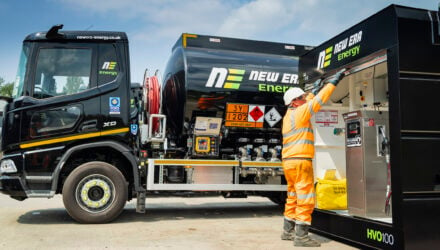The spotlight has fallen on the risk of dangerous driving recently, with the UK government introducing new legislation that makes it illegal for drivers to use handheld mobile phones behind the wheel.
It’s not an issue isolated in the UK either, as the Federal Motor Carrier Safety Administration (FMCSA) has voiced big concerns over speeding, distracted driving, work zone accidents and a lack of seat belt use in fatal truck crashes.
Yet the desire to protect drivers, and members of the public, can be an uphill battle for many commercial fleet organisations.
There are the ‘hard’ costs associated with penalties, and insurance premiums that are rising by more than 50% annually. But the ‘softer’ consequences shouldn’t be underestimated either.
Accidents reduce productivity when damaged vehicles must be taken off the road to be fixed, often bringing a paperwork burden. There’s also the aspect of reputational damage, impacting employee relationships, CSA scores and the ability to win new contracts.
Yet despite commercial fleets having so much at stake, only 42% have structured fleet safety programmes. Here are the five steps to creating an actionable safety programme.
- Evaluate your current driver safety approach
First, look at your existing safety plan and identify what’s working well and the blockers to introducing improvements — is it time, money, not knowing where to start?
Use this data as a starting point and ask yourself:
- What problem am I trying to solve? This can encompass a wide-ranging list, from decreasing at-fault collisions and high-risk driver behaviour, to reducing claims and insurance premiums.
- What do I already know? Interrogate the data you already have on your safety performance across three areas: cost, impact, and frequency. Also consider the priorities of others in your organisation.
- What additional information do I need? Gather feedback and ideas from stakeholders and consider the tools that are available to not only gather your data but track this over time. Measuring the impact of your new programme is critical.
- Set your goals
Next, take the current-state data that you have identified and define metrics for relevant, time-bound — and attainable — goals for each specific problem.
Safety infiltrates multiple aspects of a fleet-based organisation, so expect these to be vast and varied, as research into the measurable benefits of Samsara customers shows.
Be specific in the goals, assigning percentages and real values to assess maximum benefit. Some you may want to consider include:
- Bottom line costs saved on insurance premiums in a year
- Percentage reduction in driver attrition
- Zero mobile phone usage while vehicles are in motion
- Percentage reduction in number of accidents
The development of new initiatives will help you formalise your plan and create a positive safety culture and target specific driver behaviour.
Examples we have seen among Samsara customers include launching a driver rewards programme, hosting quarterly best practice workshops, and introducing targeted measures such as setting cruise control and speed limit rules to reduce speeding.
At Protected Cargo Transport, the team holds open sessions where drivers can say, respectfully, what they think is right or wrong at the company or what they would suggest changing, without any repercussions.
- Create an action plan
This stage is where you bring together your existing knowledge, goals and new ideas to create an action plan.
For every major initiative, define your baseline and your ultimate, time-based goal. But the key focus here is ‘action’.
Identify the first step you will take to achieve each goal, but make sure you have clearly defined a follow-up. It’s important to look beyond the kick-off to ensure momentum and long-term success.
- Secure driver buy-in
Drivers are key stakeholders for a new safety programme, but they can be very sceptical about measures like in-cab dash cams or in-cab alerts.
Research shows that 70% of drivers are most engaged when leadership communicates changes openly. For Samsara customers, we’ve seen how effective strong and respectful engagement with drivers can be in building advocates.
For example, at Sprint Waste Services regular safety meetings, sharing ‘star’ footage and coaching helped bring its 300+ drivers on the safety journey. But active sponsorship of the President Dave Nelson was key, when he installed a dash cam in his personal vehicle before fleet-wide rollout.
The impact is impressive, with dash cam footage used to exonerate drivers from more than half of all collisions in one year, a 58% reduction in speeding incidents and 50% reduction in average dollars per claim.
Setting up for safety success
When talking to operations and fleet managers, there are usually two main types of obstacles preventing them from rolling out or improving their safety programmes. The first one is a lack of a goal-oriented strategic approach, and the second is securing driver buy-in.
By assessing your current situation, setting goals and working with your peers and industry experts, you can create a data-driven programme that fosters a culture of safety and demonstrates success.
Author: Deepti Yenireddy, Product Leader and Senior Director, Samsara







